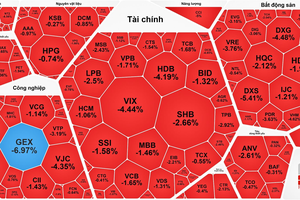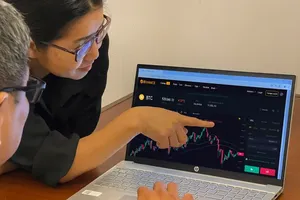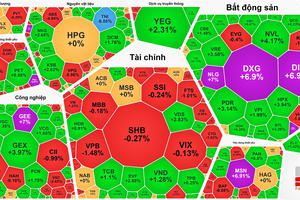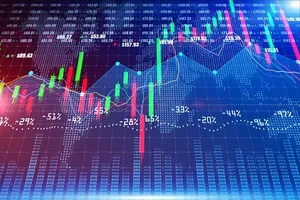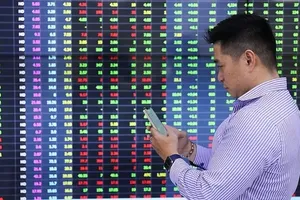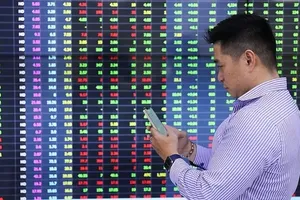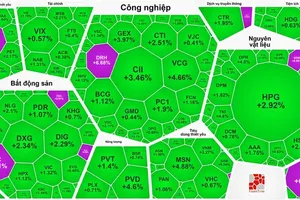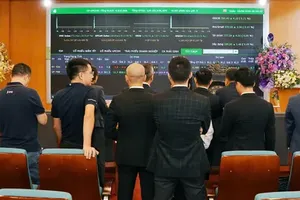
A big question for investors for the last nearly three months is whether the market has bottomed and whether the VN Index has stopped at 1,150 points. Because up to three times the Index collided with this score threshold and has not broken a single time. However, if the market really creates at a 3-bottom technical pattern, it is to be seen whether investors confidently buy at the sign of a sharp drop in liquidity.
Behind every investor's decision to put down money are always a multitude of reasons and grounds to create trust. When uncertainty and doubts are high, transactions will be slow, and investors only dare to use small amounts of money. Therefore, the low liquidity in the current period shows a lack of confidence, even when the second quarter earnings season has begun.
The obvious reason is that there are many factors that are still uncertain that are affecting the overall sentiment at the moment. Although the domestic market is quiet in terms of information, in the first six months of macro data having been announced, there are still external risks. Specifically, it is the fluctuation at the US stock market in particular and the world stock market in general. In the second half of July, the biggest story was at what rate the US Federal Reserve (FED) would continue to raise interest rates, and which depended on the June inflation figures.
Over the weekend, US inflation data in June surprised all with a record increase of 9.1%, while before that, despite predicting a sharp increase in inflation, experts only estimated 8.8%. The core inflation in June, excluding food and fuel, also increased by 5.9%, beating expectations of 5.7%. This is exactly what the market is worried about, that inflation may rise faster than forecast and the FED may raise interest rates even more aggressively.
The rapid increase in interest rates by the FED of course affects all financial markets, including Vietnam. However, the magnitude of the impact seems to be overblown with growing fear, shaking judgment about the ability to contain domestic inflation. The sharp increase in gasoline prices is still the main pressure driving inflation around the world, but each country has a different mechanism to reduce this pressure.
For instance, on 6 July in Vietnam, the Standing Committee of the National Assembly passed a resolution on environmental protection tax rates for gasoline, oil, and grease to be effective from 11 July to the end of the year. This led to a huge drop in gasoline prices almost immediately. Other countries like the US are also considering similar solutions.
It is also important to note that macro data, such as inflation, always produces slow figures. Energy price movements from the beginning of July until now have changed significantly compared to June. Specifically, the price of Brent oil, after peaking in mid-June, has adjusted down nearly 20% to below US$100 per barrel. The US WTI oil price has also fallen to about US$96 per barrel.
The Bloomberg Commodity Index, a composite Index that tracks the price of future contracts of 23 basic commodities around the world, is also falling sharply. This Index peaked in mid-June to about 137.5 points and fell below 113 points at the end of last week, equivalent to a decrease of nearly 18%. This downtrend in commodity prices will ease inflation in July.
Market for seasoned investors
The ability to control inflation in the country is supported by many favorable external factors when the price of gasoline and international basic commodity prices are cooling down. Domestically, the biggest pressure from petrol prices has been curbed by the tax reduction policy. If international gasoline prices continue to fall, domestic gasoline prices will drop even further, creating conditions to reduce costs for logistics activities and production of various goods.
The fact that the VN Index is hovering around the bottom in the midst of confusing information and creating anxiety which is likely to deceive the minds of investors. The assessment of the market through the Index at this time is less accurate, because the deviation in this Index structure is heavily influenced by large-cap stocks. For example, from 29 June to 13 July the VN Index fell 44 points, by more than 25 points belonging to five stocks, namely, GAS, VCB, MSN, VHM, and VIC. Investors now need to understand whether these stocks representative the market, despite being highly represented in the VN Index. By understanding this, investors can become more confident in making decisions at the present stock market.
One point worth noting is that although the VN Index fluctuated around bottom and barely managed to make gains, many stocks gained strongly. Specifically, since the second bottom hit of 1,150 points on 21 and 22 June, so far, the VN Index has not gained any points, but those 17 trading sessions recorded up to 150 component shares of the Index increasing from 5% or more. There were nearly 80 stocks that increased by 17% in 17 sessions, which is an average of about 1% per day.
This leads to a very practical question whether the VN Index is deceiving investors or are investors choosing to ignore the stock market situation. If they are choosing the right stocks, of which the number is not small, then investors do not need to care about how the VN Index fluctuating, if it breaks bottom or creates bottom. The only difficult thing is that in order to choose the right stocks, investors have to mobilize, research, analyze by themselves, and not listen to extortionists at forums or chat groups. This is a market for serious professional investors and those who are consistent on the stock exchange.


